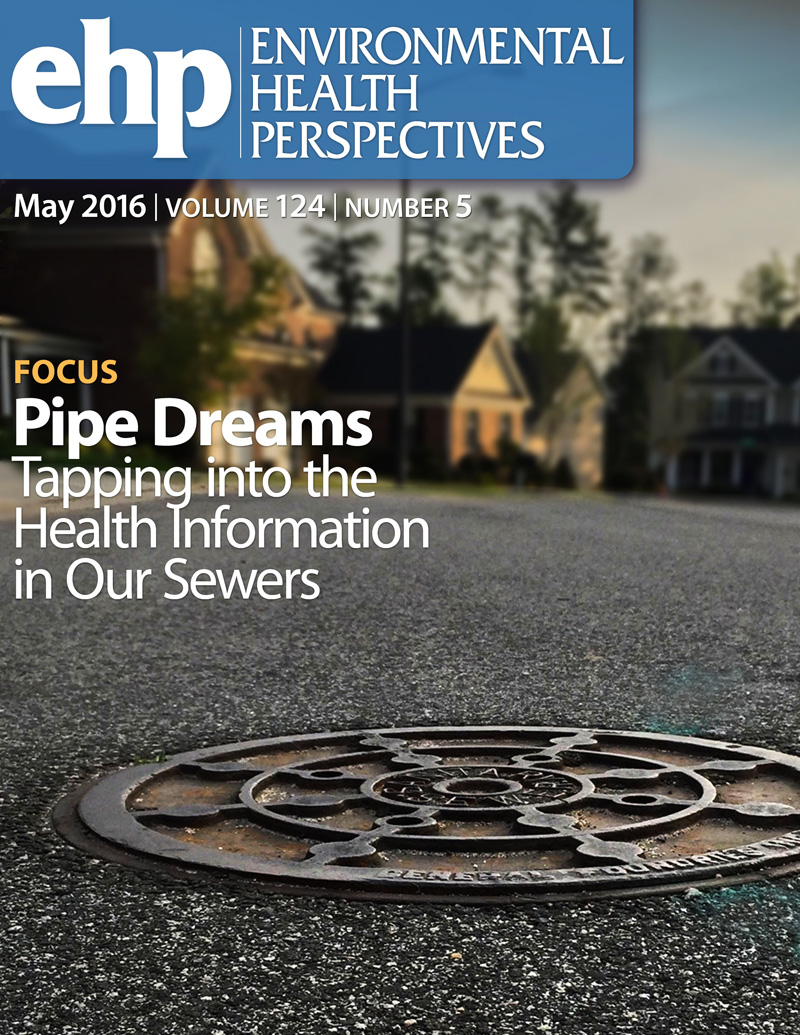血清omega-3脂肪酸对寻求生育护理的妇女尿邻苯二甲酸酯生物标志物混合物与妊娠结局之间关系的影响
IF 9.8
1区 环境科学与生态学
Q1 ENVIRONMENTAL SCIENCES
引用次数: 0
摘要
邻苯二甲酸盐暴露是普遍存在的,并且与妊娠并发症有关。血清长链n-3多不饱和脂肪酸(n3PUFA)和邻苯二甲酸酯生物标志物之间的相互作用在生物学上是合理的,因为两者都可以结合参与胎盘发育的人过氧化物酶体增殖物激活受体(ppar)。然而,在人类中缺乏这种相互作用的证据。目的评价血清n3PUFA是否改变了邻苯二甲酸酯暴露与妊娠结局的生物标志物的相关性。方法在2004-2017年环境与生殖健康研究中351名接受体外受精的妇女中,我们通过分位数g计算评估了二十碳五烯酸(EPA)和血清二十二碳六烯酸(DHA)的修饰对妊娠结局与尿中邻苯二甲酸酯生物标志物浓度混合物的相关性的影响。所有模型均根据年龄、体重指数、既往吸烟、不孕症诊断、治疗年份和尿比重进行调整。结果邻苯二甲酸酯生物标志物混合物的浓度与最低胎位(总脂肪酸< 2.66%)中血清EPA+DHA的妇女较高的妊娠损失调整概率和较低的活产估计概率相关,但与中高血清EPA+DHA的妇女无关(p相互作用分别为0.06和0.15)。在血清EPA+DHA最低四分位数的妇女中,邻苯二甲酸酯混合物最低和最高四分位数的妇女的妊娠损失调整概率[95%置信区间(CI)]分别为5%(2%,16%)和44% (23%,85%)(p趋势= 0.01)。在血清EPA+DHA处于最高水平(总脂肪酸的小于或等于3.78%)的女性中,相应的估计值为14%(5%,41%)和11% (3%,42%)(p趋势= 0.81)。在活产中观察到类似的趋势,但在植入和临床妊娠中没有观察到。结论本研究提示邻苯二甲酸盐暴露对妊娠损失和活产的不良影响可以通过摄入n3PUFA来减轻。这些结果,如果重复,可以为临床实践提供信息,减少普通人群中邻苯二甲酸盐暴露导致的不孕负担,并改善不孕夫妇的妊娠结局。https://doi.org/10.1289/EHP15942。本文章由计算机程序翻译,如有差异,请以英文原文为准。
Effect modification of serum omega-3 fatty acids on the associations between urinary phthalate biomarkers mixture and pregnancy outcomes among women seeking fertility care.
BACKGROUND
Phthalate exposures are ubiquitous and have been associated with pregnancy complications. Interaction between serum long-chain n-3 polyunsaturated fatty acids (n3PUFA) and phthalate biomarkers is biologically plausible because both can bind to human peroxisome proliferator-activated receptors (PPARs) which are involved in placenta development. However, evidence of this interaction in humans is lacking.
OBJECTIVE
To evaluate whether serum n3PUFA modifies the associations of biomarkers of phthalate exposure on pregnancy outcomes.
METHODS
Among 351 women undergoing in vitro fertilization in the Environment and Reproductive Health study (2004-2017), we evaluated the effect modification of eicosapentaenoic acid (EPA) and serum docosahexaenoic acid (DHA) on the association of pregnancy outcomes with the mixture of urinary concentrations of phthalate biomarkers by quantile g-computation. All models were adjusted for age, body mass index, prior smoking, infertility diagnosis, treatment year, and urinary specific gravity.
RESULTS
Concentrations of the phthalate biomarkers mixture were associated with higher adjusted probabilities of pregnancy loss and lower estimated probabilities of live birth among women with serum EPA+DHA in the lowest tertile (< 2.66% of total fatty acids), but not among women with middle-to-high serum EPA+DHA (p interactions = 0.06 and 0.15, respectively). Among women in the lowest tertile of serum EPA+DHA, the adjusted probability [95% confidence interval (CI)] of pregnancy loss for women in the lowest and highest quartile of phthalates mixtures was 5% (2%, 16%) and 44% (23%, 85%), respectively (p trend = 0.01). The corresponding estimates were 14% (5%, 41%) and 11% (3%, 42%) among women with serum EPA+DHA in the highest tertile (⩾ 3.78% of total fatty acids) (p trend = 0.81). Similar trends were observed for live birth but not for implantation and clinical pregnancy.
CONCLUSIONS
This study suggests adverse effects of phthalate exposure on pregnancy loss and live birth may be attenuated by intakes of n3PUFA. These results, if replicated, could inform clinical practice reducing the burden of infertility by phthalate exposure among the general population and improving pregnancy outcomes among subfertile couples.. https://doi.org/10.1289/EHP15942.
求助全文
通过发布文献求助,成功后即可免费获取论文全文。
去求助
来源期刊

Environmental Health Perspectives
环境科学-公共卫生、环境卫生与职业卫生
CiteScore
14.40
自引率
2.90%
发文量
388
审稿时长
6 months
期刊介绍:
Environmental Health Perspectives (EHP) is a monthly peer-reviewed journal supported by the National Institute of Environmental Health Sciences, part of the National Institutes of Health under the U.S. Department of Health and Human Services. Its mission is to facilitate discussions on the connections between the environment and human health by publishing top-notch research and news. EHP ranks third in Public, Environmental, and Occupational Health, fourth in Toxicology, and fifth in Environmental Sciences.
 求助内容:
求助内容: 应助结果提醒方式:
应助结果提醒方式:


